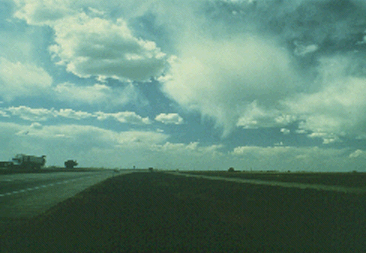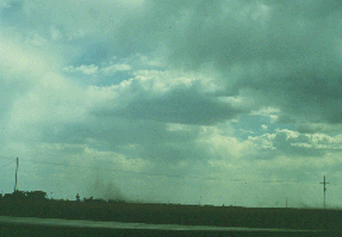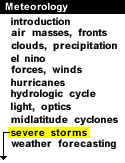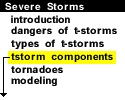
|
A downburst is a strong downdraft which includes an outburst of potentially damaging winds on or near the ground. If the diameter of the downburst is less than 2.5 miles, it is called a microburst. The diagrams below depict the evolution of a microburst.

A microburst initially develops as the downdraft begins its descent from cloud base. The downdraft accelerates and within minutes, reaches the ground (contact stage). It is during the contact stage that the highest winds are observed. During the outburst stage (above), the wind "curls" as the cold air of the microburst moves away from the point of impact with the ground. During the cushion stage, winds about the curl continue to accelerate, posing a great threat to nearby aircraft.

These are very weak, high based showers without thunder, but with microbursts. Studies have shown that they predominantly occur in the High Plains and western U.S.: particularly in unstable, very dry low level environments with surface temperature-dew point spreads of 30 to 50 degrees and an area of mid-level moisture as a source for the weak showers.

Photograph by: Moller
The cloud on the left is developing, whereas the fuzzy anvil on the right has matured and is producing a trail of virga. Microbursts would be most likely to occur beneath the virga, when the downdraft reaches the ground. Several of these virga showers did produce microbursts in the Lubbock, Texas area.

Photograph by: Moller
The same day, near the Lubbock Airport, we see several of the small microbursts which emanated from the virga patch in the upper right corner of the photograph. Wind shifts of 35 to 40 MPH were noted shortly after this time, with a rapid onset and cessation of the wind gusts.

gust fronts |
|

anatomy |






